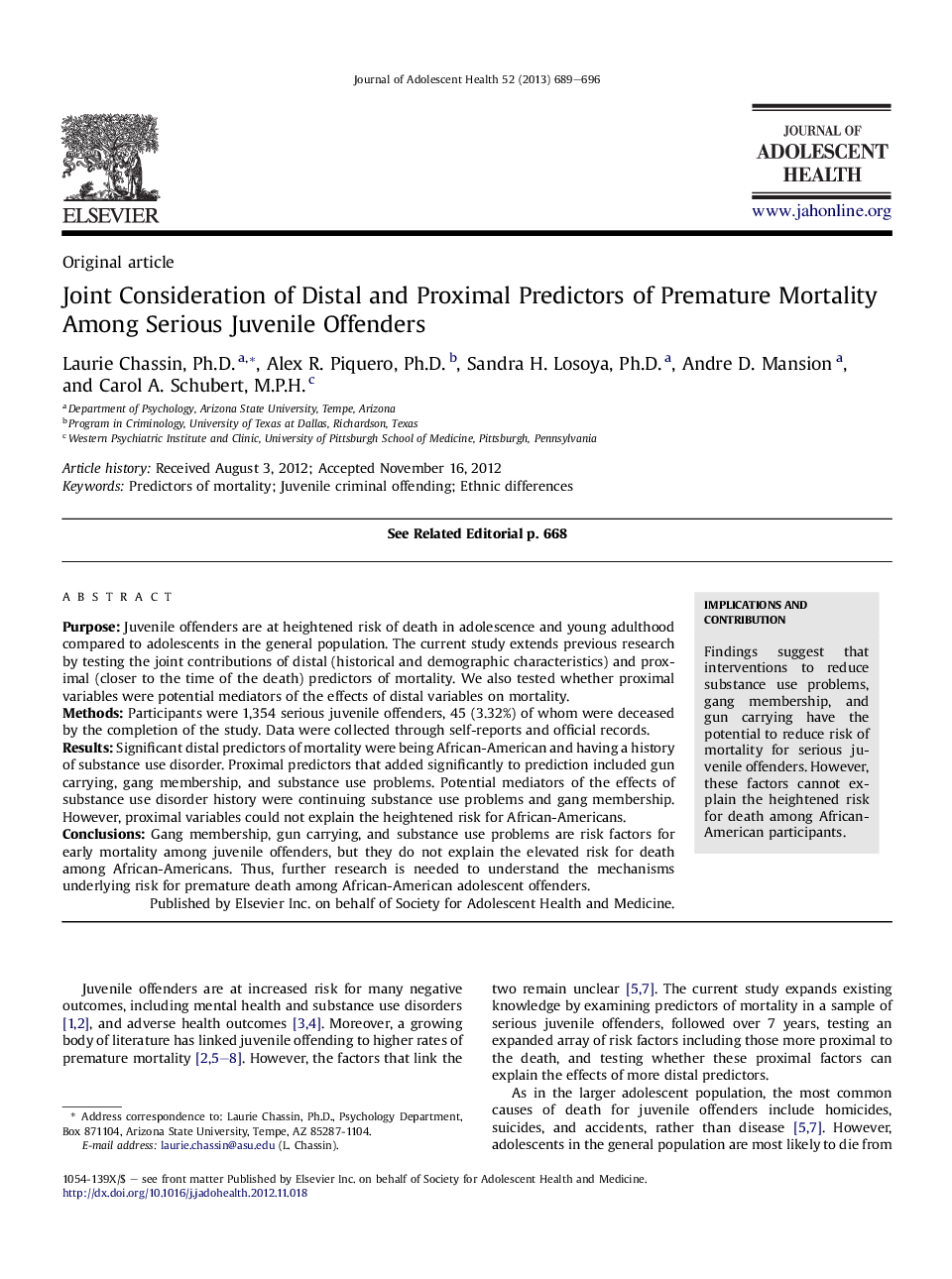| Article ID | Journal | Published Year | Pages | File Type |
|---|---|---|---|---|
| 1078224 | Journal of Adolescent Health | 2013 | 8 Pages |
PurposeJuvenile offenders are at heightened risk of death in adolescence and young adulthood compared to adolescents in the general population. The current study extends previous research by testing the joint contributions of distal (historical and demographic characteristics) and proximal (closer to the time of the death) predictors of mortality. We also tested whether proximal variables were potential mediators of the effects of distal variables on mortality.MethodsParticipants were 1,354 serious juvenile offenders, 45 (3.32%) of whom were deceased by the completion of the study. Data were collected through self-reports and official records.ResultsSignificant distal predictors of mortality were being African-American and having a history of substance use disorder. Proximal predictors that added significantly to prediction included gun carrying, gang membership, and substance use problems. Potential mediators of the effects of substance use disorder history were continuing substance use problems and gang membership. However, proximal variables could not explain the heightened risk for African-Americans.ConclusionsGang membership, gun carrying, and substance use problems are risk factors for early mortality among juvenile offenders, but they do not explain the elevated risk for death among African-Americans. Thus, further research is needed to understand the mechanisms underlying risk for premature death among African-American adolescent offenders.
